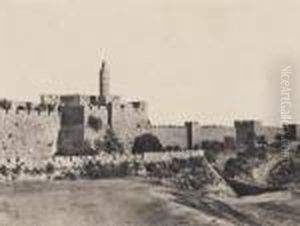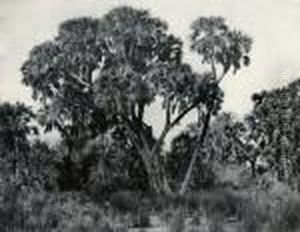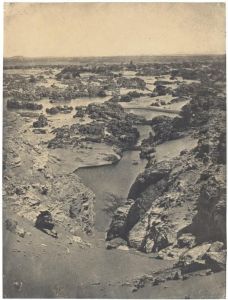Maxime Du Camp Paintings
Maxime Du Camp was a French writer and photographer, born on February 8, 1822, in Paris, France. He came from a well-off family, which provided him the opportunity to pursue his interests in literature and the arts. Du Camp was a pivotal figure of the 19th century French literary scene and a close friend of the famous writer Gustave Flaubert, with whom he traveled extensively.
In 1844, Du Camp began his literary career and associated with major figures like Victor Hugo and George Sand. However, it was his journey with Flaubert between 1849 and 1851 to the Middle East, which profoundly influenced his work. During this trip, he took hundreds of photographs, including images of Egypt, Palestine, Syria, and other locations, making him one of the pioneers of travel photography. These photographs were later published in a historic volume titled 'Egypte, Nubie, Palestine et Syrie' (1852), which documented these ancient lands and their monuments with a level of detail and accuracy that was unprecedented at the time.
Du Camp was an early adopter of the calotype process, a paper negative technique developed by William Henry Fox Talbot, which allowed him to capture these images with relative ease compared to other methods available at the time. His photographs were not just artistic expressions but also served as a source of ethnographic and archaeological information.
Aside from photography, Du Camp was a prolific writer and critic. He wrote novels, essays, and travel literature, contributing to the understanding of foreign cultures and places. His written works include 'Les Chants Modernes' (1855), a collection of poems, and 'Souvenirs et Paysages d'Orient' (1848), a travel memoir. He was also instrumental in the establishment of the Société de Géographie and became one of its first secretaries.
Maxime Du Camp was recognized for his contributions to literature and was awarded the title of Chevalier of the Légion d'Honneur. Towards the end of his life, he became more conservative and critical of the avant-garde movements of his time. He passed away on February 9, 1894, in Baden-Baden, Germany, leaving behind a legacy as a pioneering figure in travel photography and French literature.


